|
|
||||||||||||||||||||||||||||||||||||||||||||||||||||||||||
|
Please sign my Guestbook and leave feedback |
||||||||||||||||||||||||||||||||||||||||||||||||||||||||||
|
Recent Additions |
||||||||||||||||||||||||||||||||||||||||||||||||||||||||||
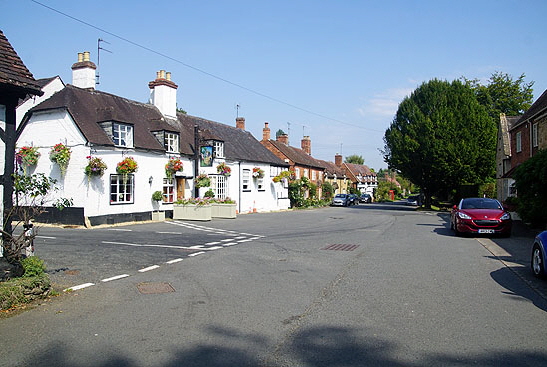 |
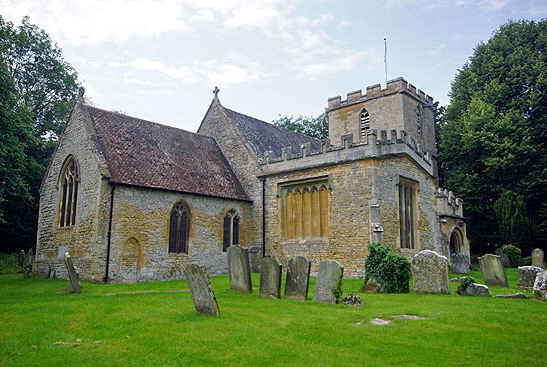 |
||||||||||||||||||||||||||||
|
Left: This picture is taken with the church behind me and I really wanted to show you what a very pleasant village this is with its main street leading directly to the church before the road turns sharp right. Right: The south “transept” which - should be more accurately described as a chapel - rather spoils the proportions of the church giving it a somewhat foursquare look. That is not helped by the rather unfortunate rectangular windows that presumably were designed to shed light on the monuments within. |
|||||||||||||||||||||||||||||
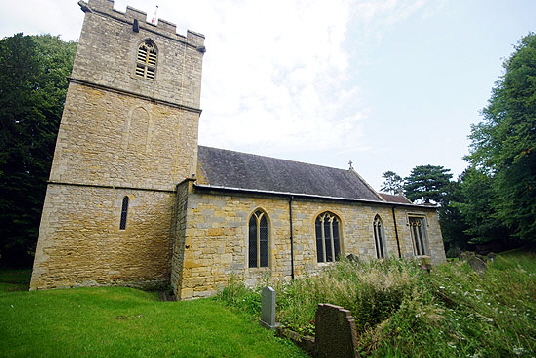 |
|||||||||||||||||||||||||||||
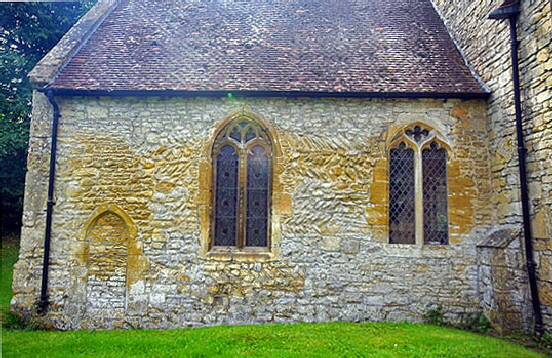 |
|||||||||||||||||||||||||||||
|
Left: The south side of the chancel with its herringbone masonry that demonstrates an early Norman or even pre-Norman date. Lest that seems fanciful, Pevsner says that the interior - I won’t bore you with the details - is “problematic” and could imply an original long nave and chancel of “Anglo-Saxon” (ie very tall) proportions. What he doesn’t remark upon is the rather curiously-placed (early?) Gothic door shown here at the south east corner. It led to a vestry that was located behind the altar. I have already remarked during this trek on the northern orientation of both Tewkesbury Abbey and Bredon Church. It really does seem that south orientation was by no means the norm in this part of the world that it was in many others. I put that down, possibly fancifully, to the large number of abbeys and priories in the areas that would probably have had no truck with the “Devil’s Side” tradition. Right: Just to emphasise the point the south side has the unkempt appearance of many a church north side! As with so many churches, the mix and match nature of the windows here does the church no favours. The lower sections of the tower date from the thirteenth century as implied by the lancet window. |
|||||||||||||||||||||||||||||
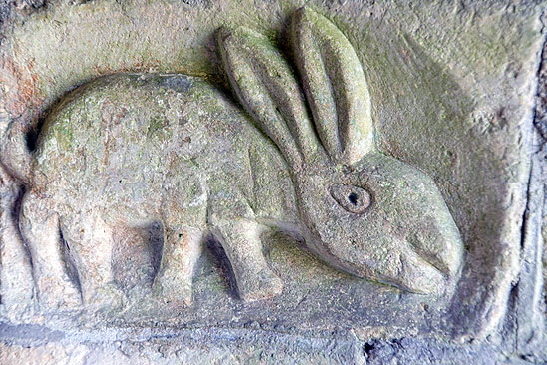 |
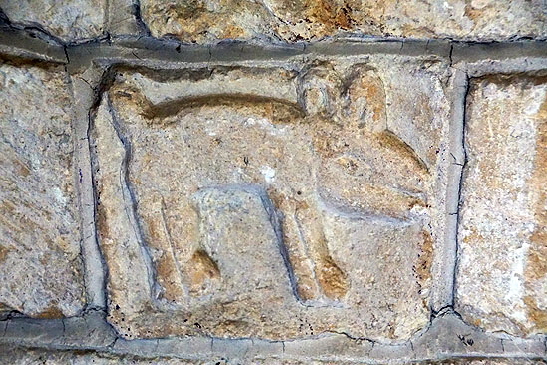 |
||||||||||||||||||||||||||||
|
Left and Right: Respectively carvings of a rabbit and (allegedly) a pig in the in the porch. Where these were originally situated, I cannot imagine. |
|||||||||||||||||||||||||||||
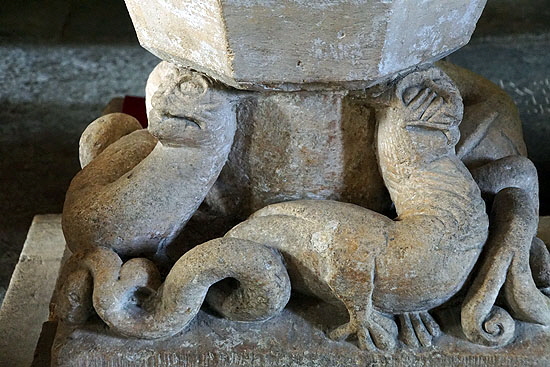 |
|||||||||||||||||||||||||||||
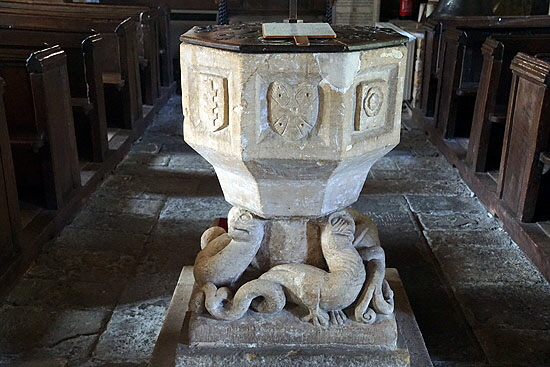 |
|||||||||||||||||||||||||||||
|
Left and Right: The font with its beasties. I have never seen anything like this composition. The symbols on the octagonal and decidedly Gothic font bowl are variously heraldic devices and symbols of the Five Wounds of Christ. The base figures are consistently described as “thirteenth century” which seems bonkers to me and I suspect that everyone has, as they so often do, followed Pevsner’s dating. Those faces - as well as the subject matter - look pretty darned Norman to me.. |
|||||||||||||||||||||||||||||
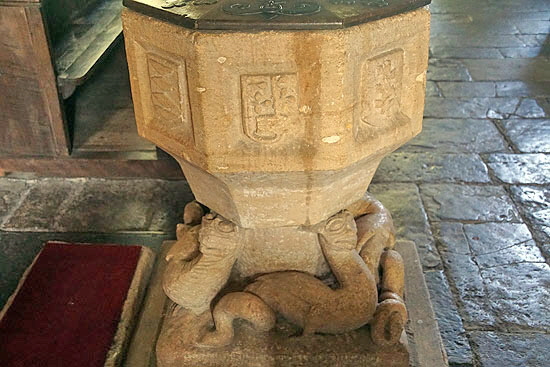 |
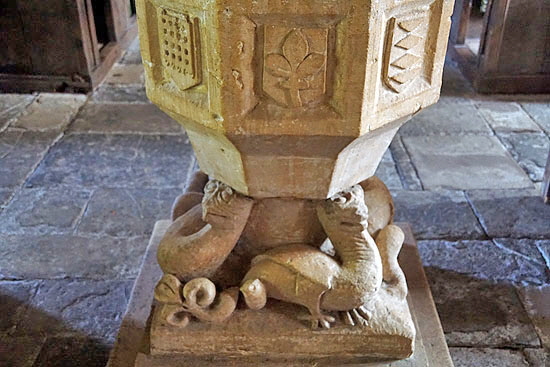 |
||||||||||||||||||||||||||||
|
Some more views of the beasties for you delectation. They look rather happy little chappies to me. Note the elaborate terminations to some of their tails. |
|||||||||||||||||||||||||||||
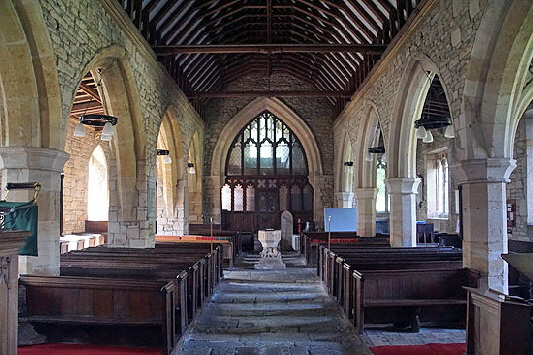 |
|||||||||||||||||||||||||||||
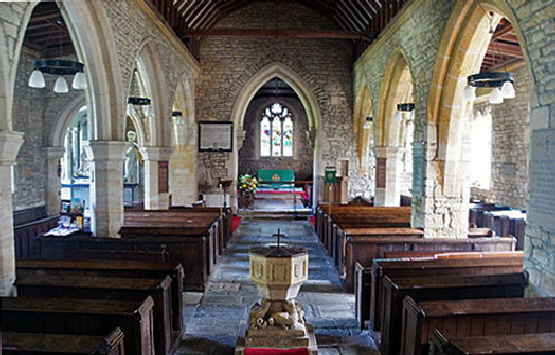 |
|||||||||||||||||||||||||||||
|
Left: Looking to the east. This is a light and airy church. The north arcade is fifteenth century. On the south arcade note that there are no piers on the two westernmost arches - it appears as if the arches are cut into the original walling. This implies that the original church was aisle-less and therefore very long and very tall in proportion to its width. This is what caused Pevsner to wonder, almost apologetically and noting the herringbone masonry in the chancel, whether the original church was of proportions implying Anglo-Saxon provenance. Right: Looking towards the west with its imposing tower arch. |
|||||||||||||||||||||||||||||
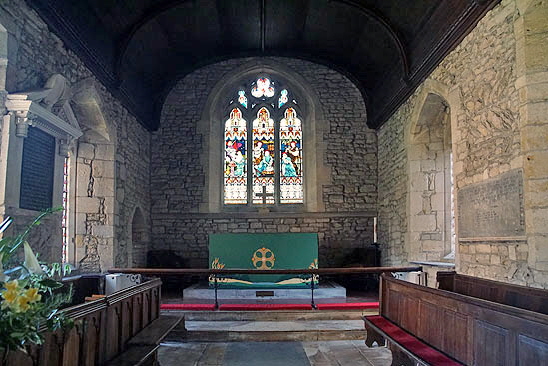 |
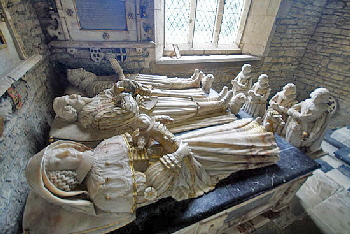 |
||||||||||||||||||||||||||||
|
Left: The chancel. On the south side you can see more evidence of herringbone masonry. Right: The impressive Savage monument. As is so often the case, this is a dream for those who study historic costume. The lady holds a baby in her hand in a rather bizarre posture, the child surely in danger of a dislocated neck? |
|||||||||||||||||||||||||||||
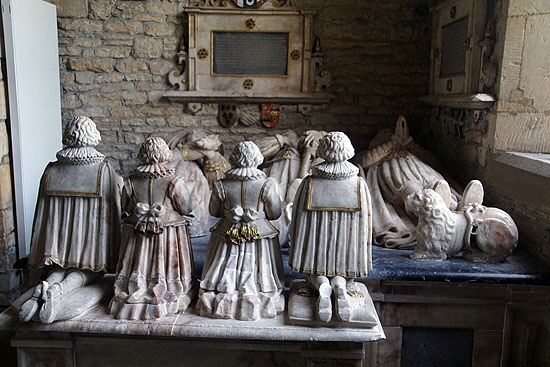 |
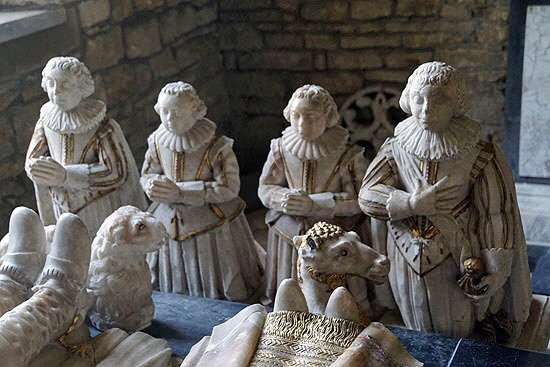 |
||||||||||||||||||||||||||||
|
Left and Right: The weepers. Everything on this monuments is magnificently carved. Note the lion at the feet of Giles and the deer at the feet of his daughter in law. Prettily, the deer has been pierced through the neck by an arrow. |
|||||||||||||||||||||||||||||
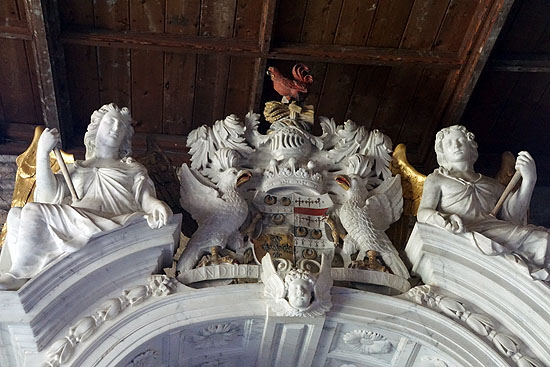 |
|||||||||||||||||||||||||||||
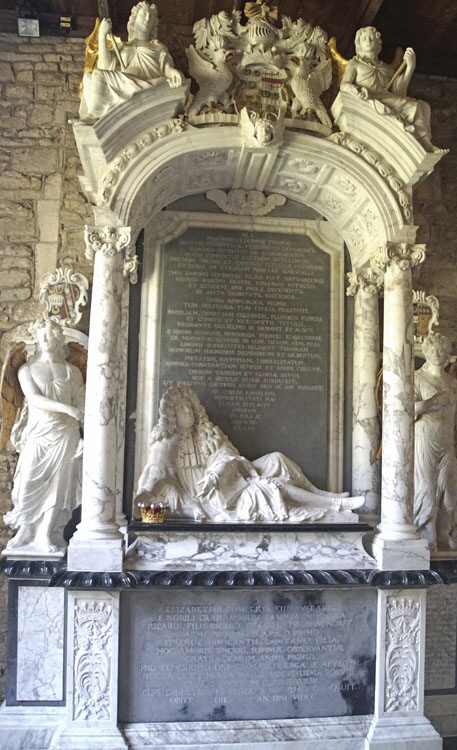 |
|||||||||||||||||||||||||||||
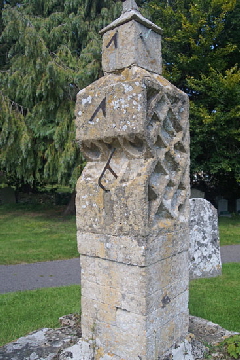 |
|||||||||||||||||||||||||||||
|
Left and Above Right: The memorial to the First Earl of Coventry (why does that sound a bit of a giggle?) who died in 1699. He was famous for being...erm...a Member of Parliament. Look at the Savage monument above and see what a difference seventy years made. The knightly qualities of the Savages - all swords and armour have been overtaken by a kind of pseudo-classical style where our hero reclines, flanked by Greek-style figures, sighing having dashed off a few lines of deathless verse or having had an exhausting session in the House. His biography and lineage are carved with model brevity on the monument. This is baroque at its most gross. Jenkins puts it admirably: “His pomposity contrasts with the quiet repose of the effigies opposite him”. Note the elaborate arms on top of the monument. There’s a helm there that one rather supposes the man never wore in anger. And the whole lot is topped by...ta ra...a bloody cockerel forsooth! Anyway, now to the promised story. The church at nearby Croome d’Abitot has the Coventry Mausoleum so why is the first Earl’s monument here? Well, it is one of those very English stories that tell you so much about the self-regarding aristocracy. The Earl’s second wife had described herself on the monument as being of noble family. The first Earl’s in-no-way-snobbish son Thomas, the second Earl, objected to this describing his stepmother as the daughter of “one Richard Grimes, a mean person, by trade a turner”. Having complained to the College of Heralds (what - your country doesn’t have one?) about this faux pas he refused to have it in Croome D’Abitot. The stepmother, having by now married a member of the Savage family (she must have been a bit of a looker if she was really a turner’s daughter) had it brought to Elmley instead. Just an everyday tale of country life really. These are the people that made Britain great. Below Right: This was a mediaeval church cross but has been topped with a seventeenth century sundial of very odd proportions. |
|||||||||||||||||||||||||||||